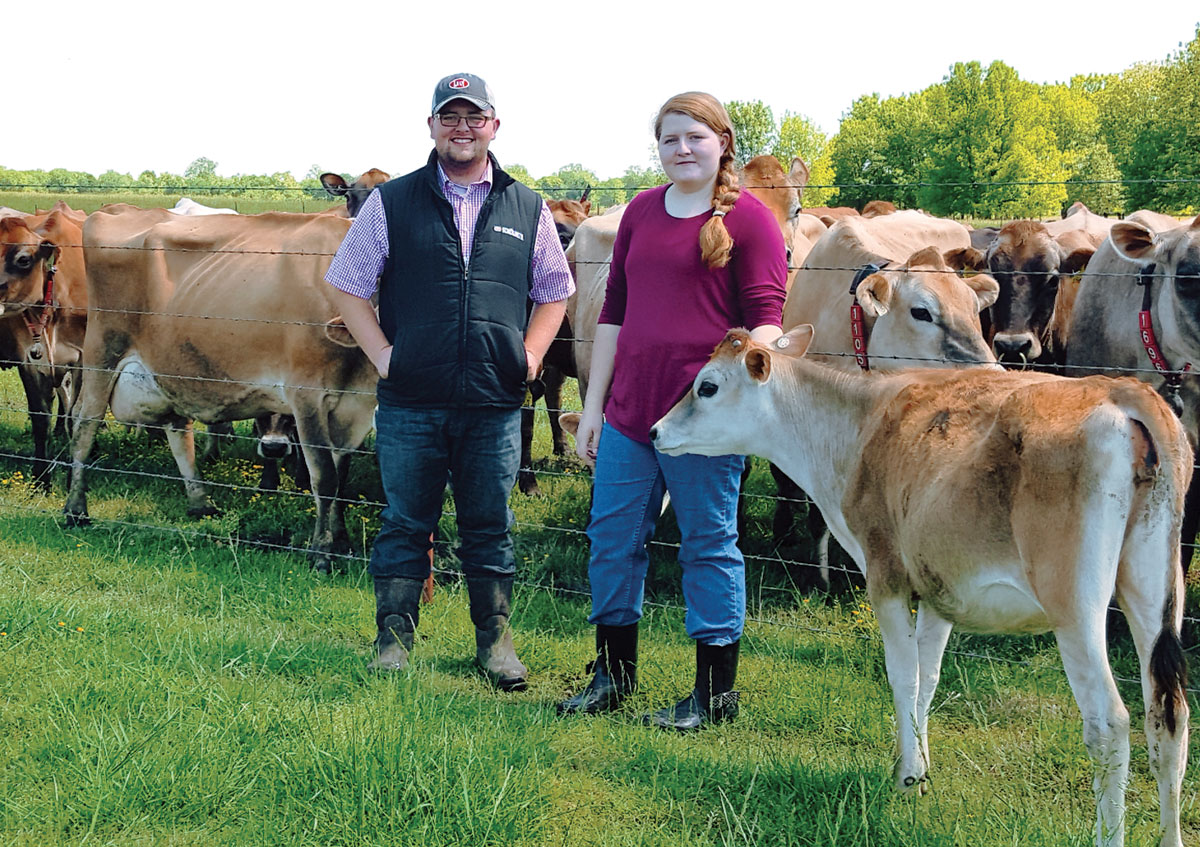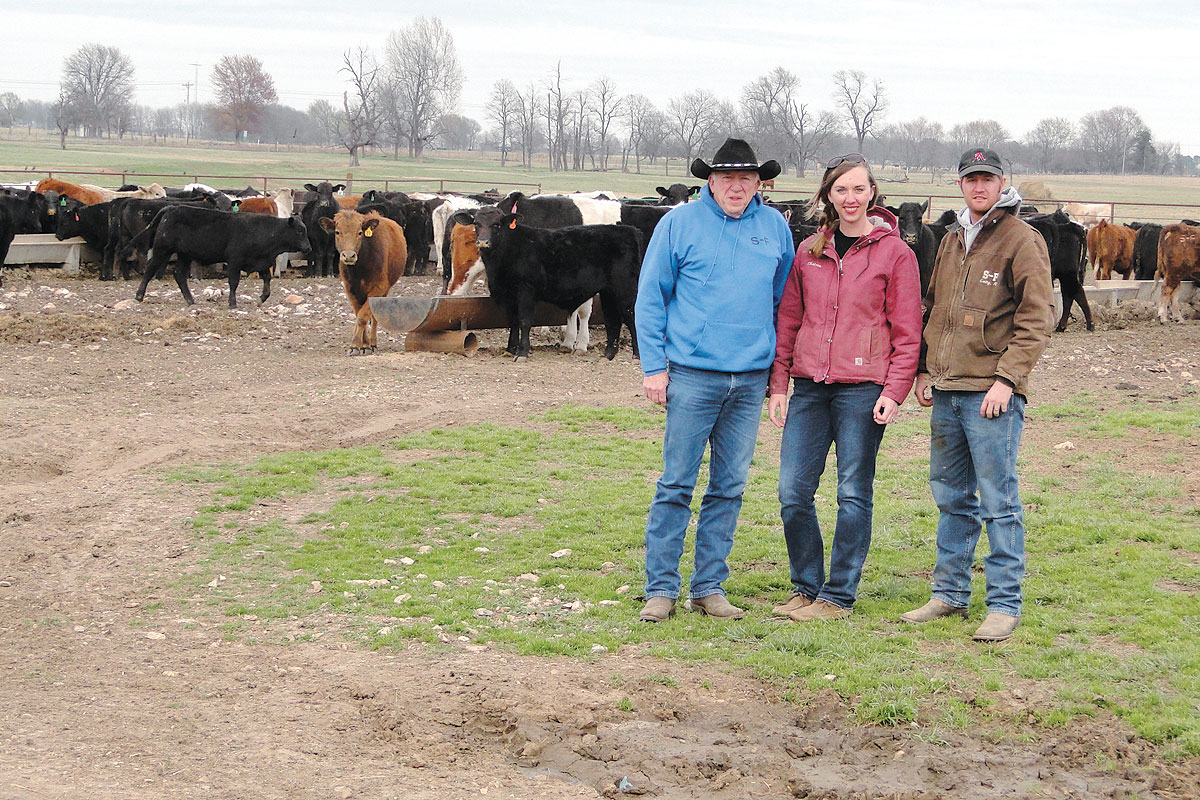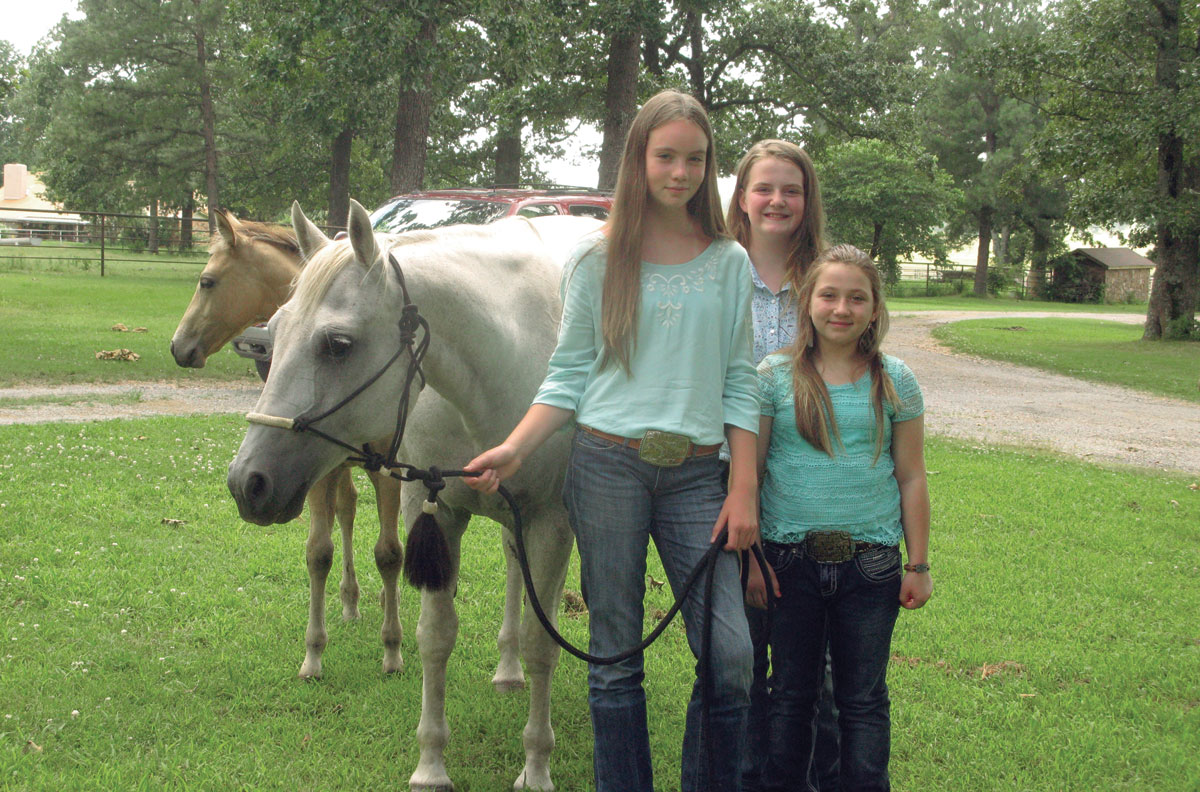
Siblings Autumn and Logan Courtney have their own farming goals and operations
Both Autumn Courtney, 18, and her brother Logan, 20, were homeschooled, with Autumn beginning a business degree with an accounting option at the Pryor, Okla., campus of Rogers State University. Logan chose an entrepreneurial path instead, and pursued his dream of being a full-time dairy farmer.
“I went to college for one semester and two weeks and decided to come home and work full-time for my parents while investigating what I wanted to do to build my own operation,” Logan said.
What distinguishes these siblings is at their young age they have a thriving agricultural partnership in dairy and wool sheep, a partnership based upon years of working together.
“Logan is the face of our partnership while I work behind the scenes,” Autumn said. “We anticipate where and when support is needed in a natural fit. In our family, working has always been family time. Logan and I have our own operations in addition to helping our dad and mom.”
In exchange for working full-time on the family cow/calf farm, Logan and Autumn get pasture, feed, hay and other on-site perks with the dairy, which is more Logan’s focus and the sheep are Autumn’s.
By the time Logan was 2, he declared he wanted to milk cows, though no one in the family was doing so at the time. Then at 4, he attended the Tulsa State Fair where for $1, he was allowed the privilege of milking an old cow by squirting her milk into a bucket. He was also given a white ribbon with “I milked a cow” emblazoned in bold letters.
Tired of Logan’s incessant begging and pleading, Logan’s parents, Tim and Nora, allowed Logan at age 12 to get a $900 loan for a Holstein/Guernsey cross cow. Logan repaid the loan in less than three years by raising and selling bottle calves.
Times have really changed. Logan now has a loan without a cosigner for the purchase of a robotic milker. Logan comes from a long line of conservative farmers who excel in maintaining rather than purchasing new equipment, and in performing all but the most demanding veterinary services. An example is Logan performing his own AI with a 75 to 85 percent pregnancy rate.
Logan and Tim began examining Logan’s dream of a dairy career by investigating the cost of a double-12 parallel rapid exit parlor for Logan’s grazed rather than confined cows. Father and son quit investigating when the potential cost reached $700,000. Next, they looked at robotic milkers, which are far more affordable for a new dairy farmer because the original purchase price is significantly less and will support 60 cows. An additional unit for another 60 cows costs less than half the original price because all that needs to be added is the stall with the second robot.
Using design and operational advice from Lely, the company who produces the robotic systems, Logan built a 60-foot-by-74-foot flat floored facility, which includes room for two robots, an office, bathroom, control panel room, separate calf kitchen and a tank room which holds with a 1,600-gallon tank. Logan plans to add more cows and another robot in the near future. One robotic milker can handle 60 cows with a 10 percent free time buffer in a 24-hour period to prevent backups. Cows are allowed access any time during the day or night and self select when they need to milk, an average of three times per day. The entire computerized system updates itself, responding individually to each cow according to information and parameters entered and received by the transponder each cow wears. The transponder even keeps track of how much time cows spend ruminating and how much time resting.
When entering a milker, each cow receives a predetermined amount of feed based upon her milk production. How much she consumes is weighed and recorded, so as she reenters, she has the exact total for the day she is allowed. If for any reason, such as being in the colostrum phase or having been treated, milk is automatically separated from the rest of the herd and entered into separate tanks.
For now, Autumn’s sheep are on the back burner until she finishes school. Nonetheless, she has 42 breeding ewes bred by rams rotated every two years. She has two distinctly different breeds of sheep. The first are Merino, which arguably produce the best wool in the industry because it is breathable, soft and can absorb up to 30 percent of its weight and still feel dry without the itchiness that characterizes many other types. The second breed is the border Leicester known for curly fiber which is prized by crafters for uses including Santa’s beards and doll hair.
Logan shears the sheep with Autumn spinning, dying, knitting and crocheting. She sells raw fiber and completed projects to private customers. The demand is greater than the supply, and Autumn plans to expand her flock, in addition to perhaps adding her products to Etsy for further marketing exposure.
Though the average age of a farmer is increasing, these two young people may herald a positive future for the industry as well as themselves. They are analytical, organized, financially aware and open to innovations that meet their strict criteria for viability. These are the qualities that have defined successful farmers since earliest history and will serve them well.






